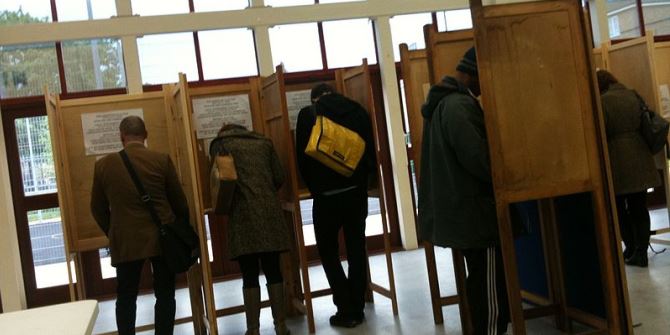 Max Nathan surveys the digital startup scene in London and explores its potential to transform how we use technology to build and manage our cities. Government support is needed for tech city – through legislation, enabling frameworks and funding tools.
Max Nathan surveys the digital startup scene in London and explores its potential to transform how we use technology to build and manage our cities. Government support is needed for tech city – through legislation, enabling frameworks and funding tools.
A vibrant technology scene has developed in London’s East End. Neighbourhoods around Clerkenwell and Shoreditch form a core around Old Street’s Silicon Roundabout. In 2010 the UK Government launched the Tech City strategy, hoping to develop the area into ‘one of the world’s great technology centres‘. Ministers are right to get excited. Inner East London is a key node in the capital’s digital ecosystem. The Centre for London finds over 3200 digital economy firms there, supporting over 48,000 jobs; those job counts have kept trending up through the recession.
Silicon Roundabout is particularly strong on content industries, including global players like MindCandy, Unruly, Songkick and Last.fm. But it’s also quietly developed a green layer – an exciting new generation of smart city and cleanweb firms. Could this be the shape of Tech City 2.0? As the world grows more cities, we need better ways to help them run. The ‘smart city’ is about using new technology to manage construction, energy, lighting and transport systems – cutting emissions and raising efficiency.
There are two competing smart city visions. The top down version involves brand new, masterplanned demonstration projects – think Masdar or Cisco’s ‘city in a box‘. The bottom up version involves grafting new functionality onto existing urban systems. For an old city like London, it’s this on-the-fly approach that’s most likely to stick. The capital is already developing smarter transport systems – such as the congestion charge, the Oystercard and Boris Bikes – which point the way ahead.
Green economy products and services also come in two flavours. Cleantech is the physical green economy – driverless cars, smart meters. Cleanweb is online green technology – crowd-sensing apps and maps, environmental data, online marketplaces. London policy-makers need this stuff. And London’s digital scene, strong on social media and digital content, is well placed to deliver it.
East London’s green digital firms are mostly very small and very young. Some offer online apps and tools for cutting carbon – such as Carbon Culture, Gnergy or Pad Partners. Others have developed green transport marketplaces, like Carbon Voyage and Loco2. A third group are more focused on hardware and systems, such as Cosm, Fairphone and Mastadon C.
Amee, an environmental information, auditing and data management firm, is the daddy of the scene. Founded in 2007, it now has 13 staff and offices in London and San Francisco. The first to get major venture capital (VC) investment, it is now helping seed the next generation: founder Gavin Starks now heads the Open Data Institute, and Amee alumni are involved in the London Cleanweb network – ‘because we don’t want to bluescreen the planet’ – organising meetups, talks and hackdays.
Such networks are essential social infrastructure for new young firms. So are accelerators like Bethnal Green Ventures (BGV). Aimed at social/environmental start-ups, BGV offers a combination of seed funding (GB£15,000 / US$23,877 per firm), a peer group, structured networking and mentoring, as well as shared workspace at Google Campus.
So how big could the scene get? Cleanweb builds on London firms’ skills in programming and digital content. And BGV’s Paul Miller notes rising angel and VC interest. The Tech City initiative has shone a bright light on the area; and variable experiences with cleantech investments have pushed many US investors towards cleanweb, where capital requirements are lower and returns potentially higher.
But the next few years won’t be easy. Getting finance, finding workspace and skilled workers all present challenges for digital startups. Policy-makers hope that tech firms will migrate to brand new spaces in the Olympic Park, Stratford City and the Royal Docks – but so far there are few connections between Shoreditch and shiny new buildings further East. And cleanweb needs committed government support – through legislation, enabling frameworks and funding tools. Ministers’ twists and turns on energy policy haven’t helped.
So these are early days for green digital firms in London. But there’s a lot of promise: watch this space.
This post was first published on the Huffington Post. It is based on an article written for LSE Cities’ Urban Age ‘Electric City’ conference in December 6-7 2012. Click here for more.
Note: This article gives the views of the author, and not the position of the British Politics and Policy blog, nor of the London School of Economics. Please read our comments policy before posting.
Dr Max Nathan is a Research Fellow at LSE Cities and at the Spatial Economics Research Centre (SERC), where he works on urban economics and economic development issues. He completed an economic geography and spatial economics PhD in LSE’s Geography Department in Autumn 2011. He blogs on urban policy at http://squareglasses.wordpress.com. He also enjoys photography: his pictures have variously appeared in The Wire magazine, Londonist, Der Spiegel and Getty Images.







2 Comments